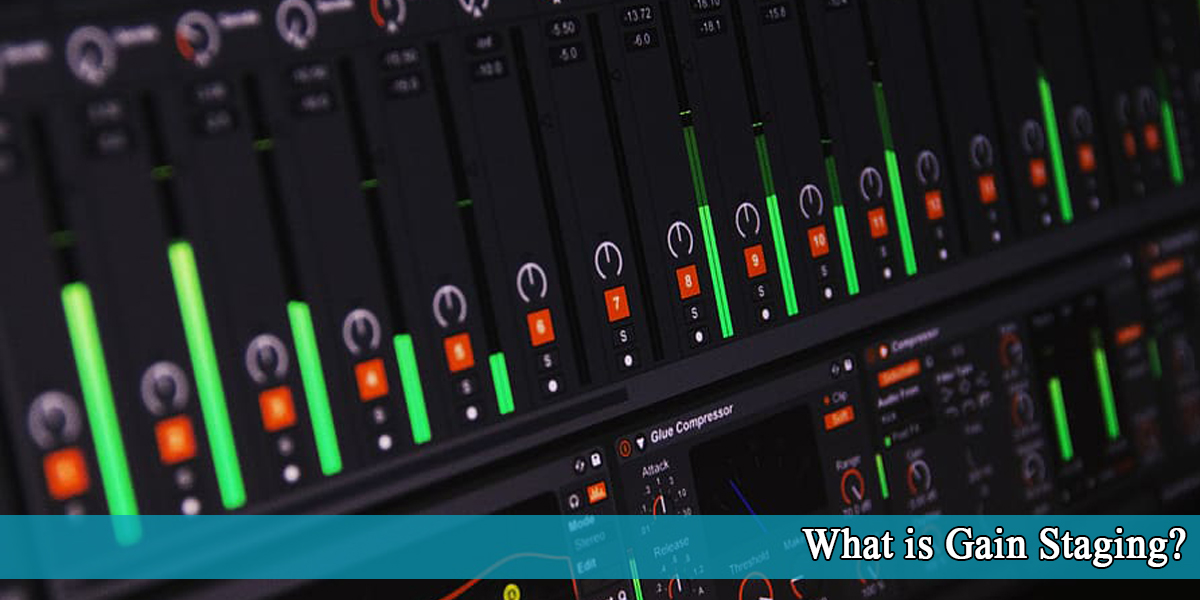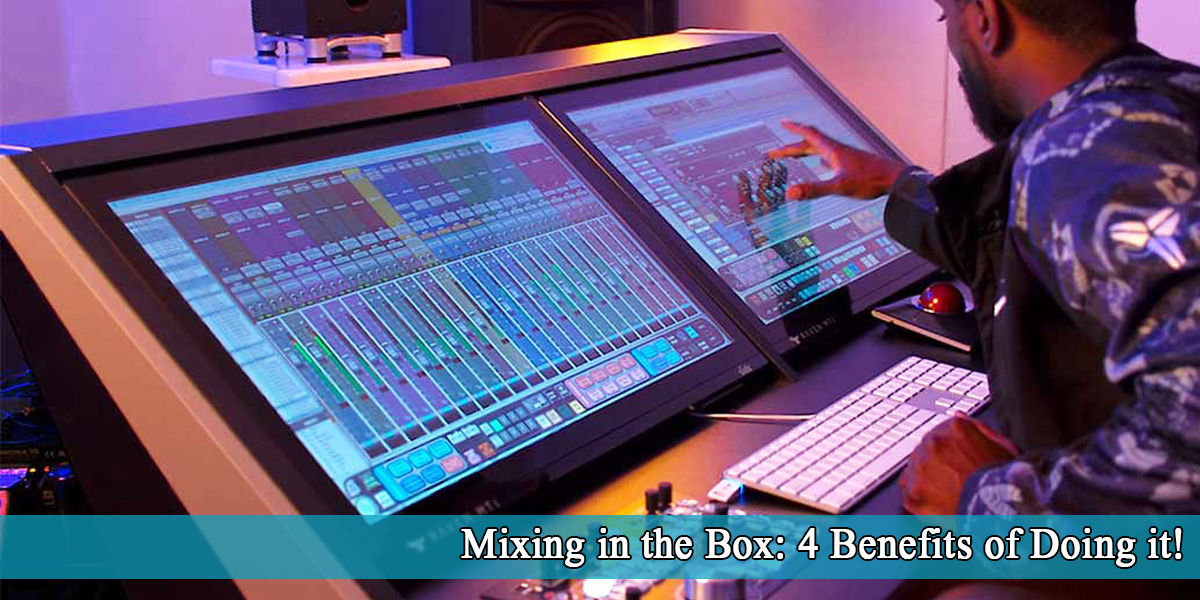Analog EQ Plugins
Intro
Looking to swap out that crystal-clear sound for a touch of lo-fi grit and vintage character? Here are a few plugins to help you add analog imperfections, mechanical modulations, and that warm, nostalgic vibe to your music.
Making lo-fi music digitally is all about recreating the charm of analog flaws—things like tape machine wobble, coloration from old gear, and the quirks of mechanical artifacts. Just remember: use these lo-fi flavors sparingly! Too much can totally ruin the classic vibe you’re aiming for.
The first EQs were all analog, and some of those early designs are still prized by engineers today for the unique, musical way they shape sound. These analog classics owe their special qualities to the one-of-a-kind circuit designs inside each unit.
Some EQs became so legendary that plugin makers started designing software versions to capture that analog magic as closely as possible. That’s why there are now so many plugin choices out there—it can get overwhelming.
So, what are the main types of analog EQ? How do they work, what are they best for, and where do they really shine? There aren’t any hard and fast rules for picking an EQ, but there are some helpful tips that can get you started with the basics.
1. Pultec Model EQ – Pultec Passive Analog EQ Plugins by UAD
The Pultec Passive EQ Plugin Collection for UAD-2 and Apollo hardware includes all three emulations of Pulse Techniques’ legendary tube EQs. The most notable is the famous two-band EQP-1A, a Pultec equalizer that has brought its signature sound to countless hit records since the 1970s.
The EQP-1A is widely regarded as one of the most musical EQs ever made. It delivers a wide, open sound that gives your tracks enhanced bass, silky highs, and irresistible warmth. In addition, Pultec EQs add analog “magic” to your tracks—sometimes just running audio through them, even without applying any EQ, imparts a special character.
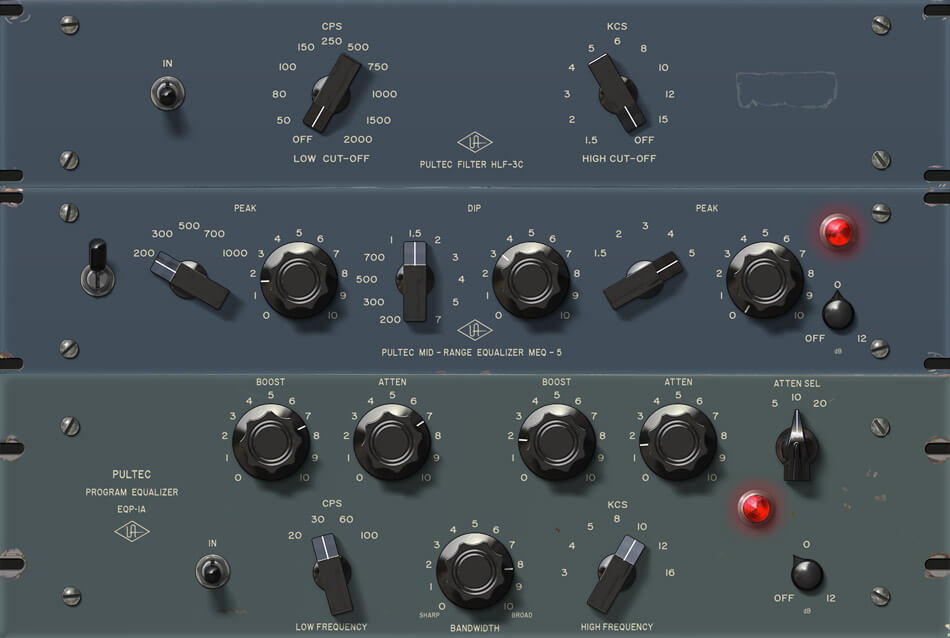
2. SSL Model EQ – SSL Channel EQ by Waves
SSL console strips have played a major role in shaping our understanding of what an EQ is.
Essential features we now take for granted—like built-in high-pass and low-pass filters, along with variable Q—were popularized by these consoles. SSL consoles are famous for their incredibly powerful filters.
With sharp high- and low-pass filters, precise frequency ranges, and very narrow Q options, these analog EQ plugins are a top choice for surgical precision and bold tonal changes. Their sound is accurate, yet assertive.

3. Neve Model EQ – T-RackS EQ 81 by IK Multimedia
The preamp section of the Neve console strip usually gets most of the attention, but the EQ is a huge part of the classic Neve sound. Neve EQs are known for their ability to make broad, smooth cuts and boosts while adding plenty of character.
The T-Racks EQ81 brings that legendary British warmth and tone with a few unique twists. Based on another classic piece of hardware—one that helped shape the sound of countless hit songs—the EQ81 can be seen as the evolution of its predecessor, the EQ73.
However, there are a number of features that give the EQ81 its own unique voice. The key is the versatility of its EQ section, which includes four independent bands: high and low shelving, plus two midrange peaking filters, all complemented by high and low pass filters. This makes the module especially useful when you need more precise control over a track, while still maintaining the tonal richness and organic, analog warmth in the signal path.
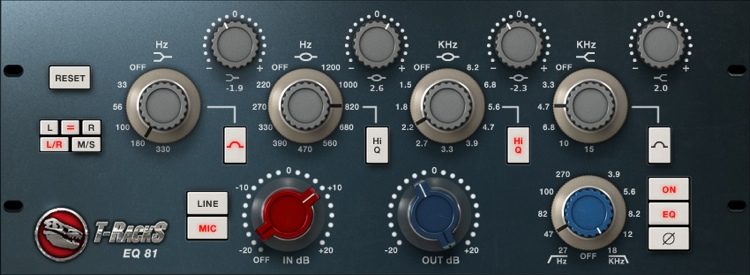
4. API Model EQ – API 550A by Waves
Inspired by the legendary late-1960s design, the API 550A EQ delivers precise and repeatable equalization across 15 points, with 5 steps of boost divided into three overlapping ranges. Both the high and low-frequency bands can be switched between peaking and shelving modes, while a band-pass filter can be engaged independently of the other settings.
The 550B, famous for its four overlapping EQ bands, is invaluable for both problem-solving and tonal enhancement. Each band offers 7 selectable filter frequencies, covering up to 5 octaves per band. Thanks to its “Proportional Q” design, the filter bandwidth automatically widens at lower boost or cut settings and narrows at higher ones.
You can even use it to undo previous processing, affect earlier changes, or completely reverse tonal adjustments. With their wide range of tonal possibilities, the API 550A and 550B are a pair of versatile analog EQ plugins, each delivering that unmistakable API sound.
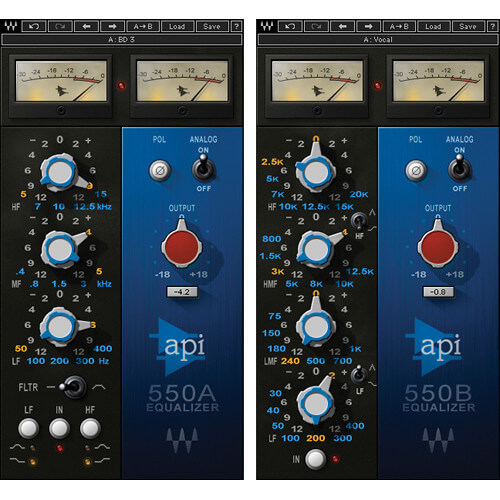
5. Maag EQ4 by Maag
You’ve heard the Maag Audio EQ4 on vocals from artists like Madonna, Celine Dion, the Black Eyed Peas, and Snoop Dogg. Now, you can have this legendary EQ right inside your DAW.
The Maag Audio EQ4’s unique design ensures exceptionally low phase shift across all EQ adjustments. This preserves the true character of your mix while enhancing those sought-after “Airy” frequencies. The AIR BAND works together with the five bandpass EQs, allowing you to shape your tracks from top to bottom with unmatched transparency and high-end presence.
The Maag Audio EQ4 is a musical EQ, not a surgical one, making it perfect for sweetening tracks. Try it on your vocal tracks and hear for yourself why top audio engineers—who have access to every EQ out there—choose the EQ4 for vocals.
The plugin version also features a new LEVEL TRIM control, which lets you easily reduce the overall gain if needed. Detent controls make recalling your settings simple, and you can ALT/click to switch between resetting each band and returning to the last setting, making it easy to bypass individual bands.

Conclusion
There’s a whole world of EQ out there. It’s such a fundamental tool that engineers will always have strong opinions about it. That means designers are constantly creating new and improved versions.
Exploring all these options can feel overwhelming but also exciting. Now that you know a bit about the different types of analog EQ plugins, go ahead and try out a few from this list. You’ll discover which EQ works best for you!

